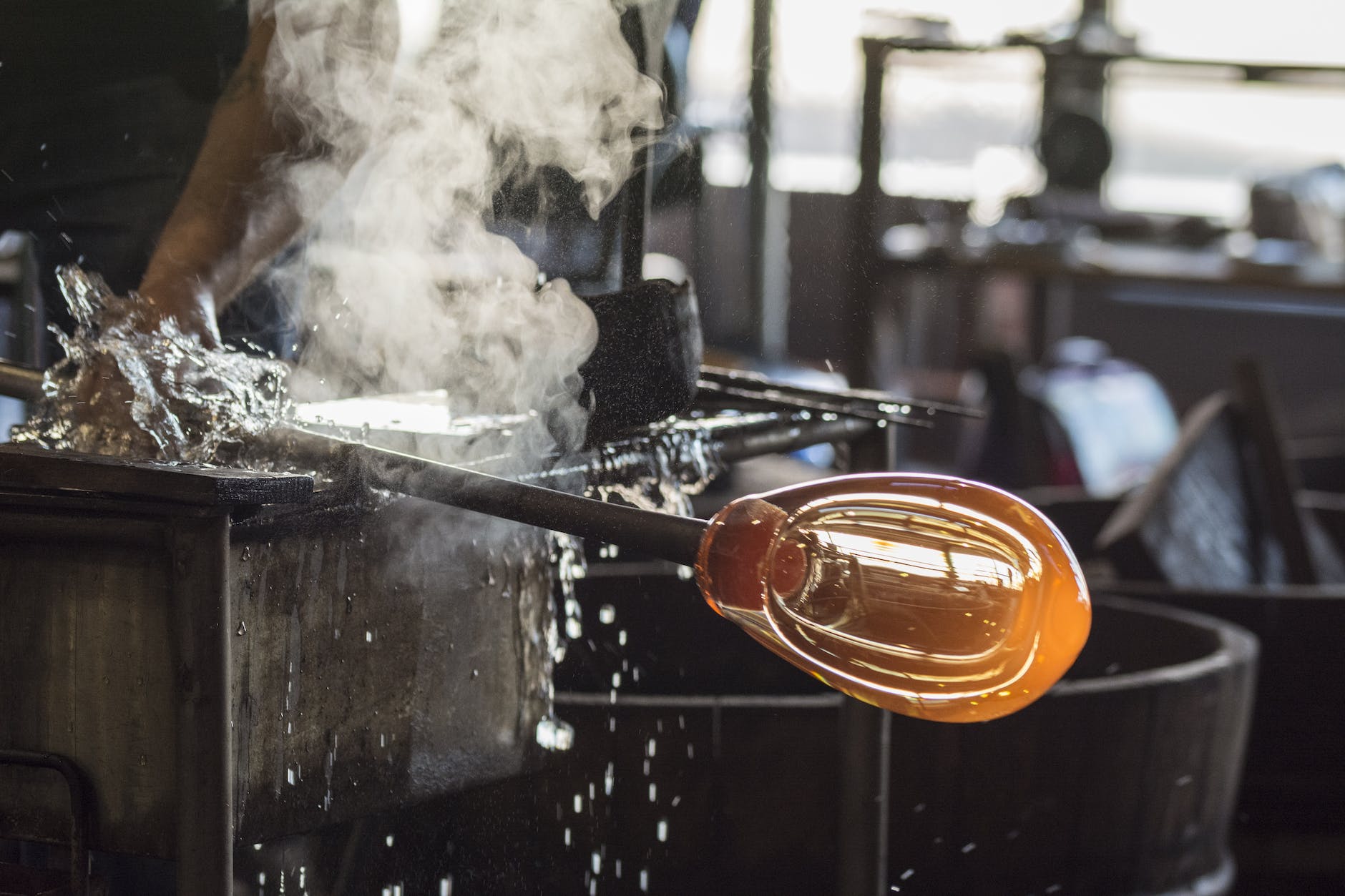The Art and Science of Glassblowing: A Creative Convergence
At first glance, glassblowing appears driven purely by intuitive artistry. However, examining the rigorous technical requirements reveals as much scientific rigor underlying the craft. This fertile fusion of precise empirical methods with fluid imagination explains glassblowing’s magnetic allure for individuals with both analytical and creative minds.
Harnessing the Physics of Heat
Physics underpins the entire glassblowing process, most elementally heat dynamics. Mastering thermodynamics allows managing molten glass’s viscous flow. Centrifugal force keeps glowing gathers adhered during spinning. Kinetic energy transfer enables blowing and shaping air pockets within the glass. Gravity’s relentless downward pull gets strategically incorporated or resisted when elongating pieces. Glassblowing exemplifies applied physics in action.
Controlling Chemical Reactions
Chemistry governs glass composition and the addition of colorants. Ionic interactions between oxides of sodium, silicon, and other elements in the batch lower melting temperatures and control optical qualities. Metal salts like gold chloride and cobalt oxide dissolve into the melt to produce vibrant hues. Preventing unwanted crystal formation maintains amorphic clarity. An intuitive grasp of chemical reactivity allows artists to achieve desired material outcomes.
Harnessing Engineering Principles
From furnace design to custom tooling, engineering permeates glassblowing. Furnaces efficiently sustain over 2000°F temperatures through insulation, convection, and controlled air injection. Annealing ovens utilize microprocessor-based PID algorithms to regulate cooling rates. Lathes, presses, and molding machinery incorporate precise engineering. Studios must also manage formidable logistical and regulatory demands.
Cultivating Artistic Vision
Yet glassblowing involves more than applied science. Mastering technical elements frees artists to pursue creative vision unencumbered. Fluency with process allows imagination to guide form. Composition, symmetry, visual rhythm, and other principles of art determine aesthetic results. Meaning emerges by embedding ideas into material. Blending technical rigor with inspired intuition culminates in significant humanist expressions.
Sparking Inventiveness and Discovery
Innovation thrives when analytical empiricism and unbridled creativity interact dynamically. Experimenting with new tools and chemical additives expands boundaries. Scientific frameworks help quantify elusive artistic goals like visual harmony. Artistic play rebuts rigid technical constraints. United through human passion, the two spheres cultivate vitality and progress. At its heart, glassblowing fuses wonder with knowledge into luminous embodiments of human potential.
The intricate marriage of art and science makes glassblowing alluring for those who possess both intuitive and analytical inclinations. Through diligent practice and openness to discovery, anyone can experience the joys of integrating mind with body and reason with imagination through glassblowing’s multidisciplinary creative process.
